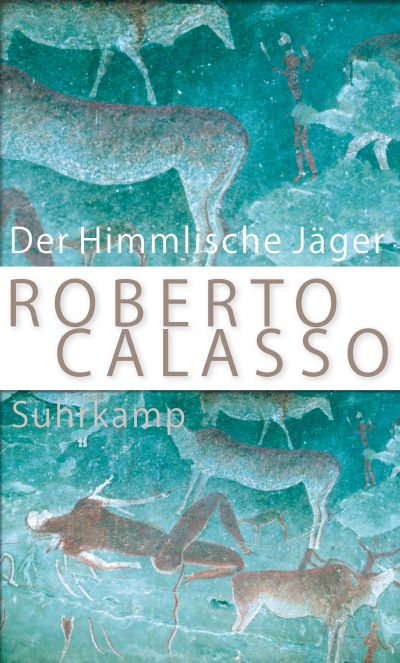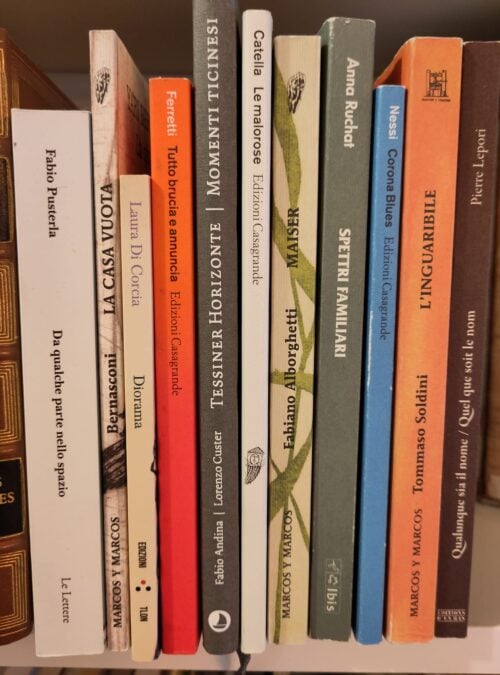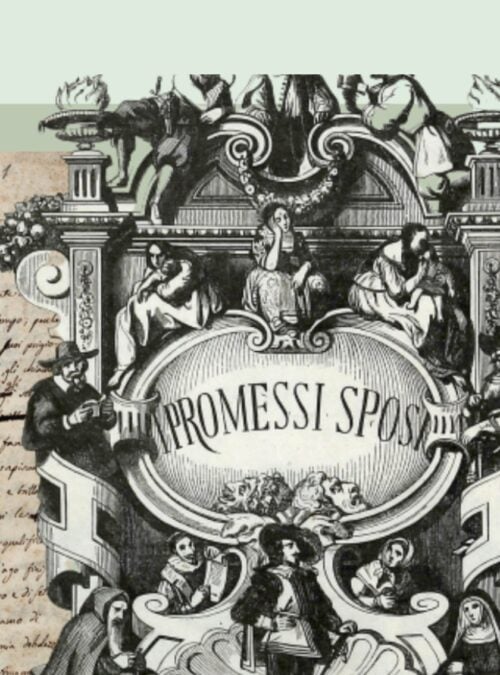Italian books in Germany and their dissemination
Author: Maria Giuliana, Universités de Halle et de Leipzig

Taking a close look at Italian fiction and non-fiction translated into German means that you also need to or, rather, must start by taking into consideration the excellent policies promoted in Germany to support literature and the publishing industry. Indeed, here in Germany there are numerous initiatives aimed at promoting literature. These include the two main German book fairs – the Leipzig Book Fair and the Frankfurt Book Fair – and numerous other events aimed at educating and encouraging young children to read, but also the generous funding in support of translations.
In the middle of the summer, while I was thinking about this article and taking notes, one of the most important figures in the Italian cultural, publishing and literary world, Roberto Calasso, sadly left us. For many readers, his name is synonymous with the selections and excellence of the Adelphi publishing house, which he ran from 1971. Many of Calasso’s own works were translated into German for a more refined readership, the most recent of which was Der himmlische Jäger, published by Suhrkamp in 2020. However, he and Adelphi are most famous for the publishing of the great classics, including Leonardo Sciascia, with this year marking the hundredth anniversary of the author’s birth, and there will always be German publishing houses ready to publish translations of Sciascia’s works.
Two new translations of his works have been published in Germany during this centenary year to pay tribute to the Sicilian author. The first was Einmal in Sizilien, translated by Sigrid Vagt and published in Berlin by Wagenbach, which has a long tradition of publishing works of Italian literature, including authors such as Beppe Fenoglio, Giorgio Manganelli, Pier Paolo Pasolini, Luigi Malerba, Carlo Emilio Gadda, Natalia Ginzburg, Stefano Benni and Tiziano Scarpa. The second, Ein Sizilianer von festen Prinzipien, with an inspired publishing choice for the title in German as it reminds one of Sciascia’s “men of tenacious concept”, is a translation of two of Sciascia’s important historical collections, Morte dell’Inquisitore and L’uomo dal Passamontagna. (Tod des Inquisitors e Der Mann mit der Stummmaske). They were translated for the first time into German by Monika Lustig and published by her own publishing, Edition Converso, with a foreword by Maike Albath. It is truly remarkable that such a small publishing house as Edition Converso has managed to publish for the German market in the last two years alone, in addition to Sciascia (2021), also authors anything but tawdry, such as Maria Attanasio (2021), Enrico Deaglio and Santo Piazzese (2019).
Speaking of virtuous publishing houses and their role as a “bridge between cultures”, one name that definitely springs to mind is Ballesi-Hansen, who taught Italian language and culture at the University of Freiburg before creating nonsoloverlag, which publishes exclusively works by contemporary Italian authors. She was awarded the prestigious Italian National Translation Prize for her translations of Italian literary works. Nonsoloverlag enables young Italian authors, most of whom have never been translated into German, to be read by German readers. These authors include Paolo Di Paolo, Simone Giorgi, Gabriella Kuruvilla, Gaia Manzini, Ludovica Medaglia, Demetrio Paolin, Anna Pavignano, Igiaba Scego, Simona Sparaco and Nadia Terranova, who have been translated by Christiane Burkhardt, Ragni Maria Gschwend and Ruth Mader-Koltay.
Another person that sadly left us this summer, at the age of eighty-five, was Ragni Maria Gschwend, a renowned translator of Italian literature and winner of numerous translation prizes. Authors she translated into German include Carlo Emilio Gadda, Claudio Magris, Italo Svevo and Elsa Morante.
Looking at the statistics for 2020 regarding the translation of books into German from other languages provided by the Börsenverein des deutschen Buchhandels (the German association of publishers and booksellers), a mere 2.4% were translated from Italian, a long way behind the 10.6% from French, but more or less in line with those from Swedish (2.3%) and better than those from Spanish (1.8%), Russian (0.8%) and Norwegian (0.6%). The lion’s share of the translations were, of course, from English (63.1%), a totally different dimension. Taking a look at the Italian authors most translated into German during the last ten years, it is pleasing to see, in addition to names that are now well known in Germany, such as Saviano, Camilleri and Elena Ferrante, a large number of lesser-known names, including Ammaniti, Avallone, Benni, Carofiglio, La Gioia, Maraini, Cognetti, De Luca, Di Pietrantonio, Janeczek, Melandri, Murgia, Parrella, Rovelli, Rumiz, Bajani and Terranova, and crime writers such as Roversi, De Cataldo and De Giovanni, with German readers very fond of krimis, including Italian crime stories.
But what are the channels most used for the dissemination of this translated literature, of new Italian books and authors, in Germany? The Italian Cultural Institutes (Berlin, Hamburg, Cologne, Munich and Stuttgart), undoubtedly, have an important role and even during the last two years, marked by the pandemic, they have continued to organise numerous events, offering a wide variety of meetings with authors and book presentations, obviously often streamed.
Among the events they organise, the Institutes also provide ample space for voices of contemporary Italian literature, especially those that have recently been translated into German. Particular attention is devoted to Italian graphic novels and children’s stories, while considerable coverage is, of course, given to the winners of Italy’s most prestigious literary awards, such as the Premio Strega and the Premio Campiello.
The Institutes also collaborate with the many Italo-German cultural associations present in the various Länder and promote literary festivals, such as ILfest in Munich, devoted entirely to Italian literature in Germany, as well as participating in important international literary festivals, such as in Berlin, which have sections devoted exclusively to Italian authors. The collaboration with Universities and Italian Departments, with the Institutes supporting and financing programmes and projects for the dissemination of Italian literature, have proved particularly successful.
Meetings with Italian authors and Italian book presentations are also frequently organised in the Literaturhaus (literature houses), an important channel for the dissemination of Italian literature among German readers with a passion for Italian culture.
Two areas that have always been popular among German readers are Italian cuisine and tourism. The German publishing market and German bookshops offer a plethora of publications (in translation or by German authors) dealing with Italian cuisine, eating and drinking Italian style, Italian produce and recipe books for Italian regional cuisine. Among the German authors, Peter Peter is an extremely successful writer on food and wine and in his articles for the Frankfurter Allgemeine Zeitung and his numerous books, he has been writing for years about the history of Italian cuisine and the most famous Italian dishes. A recent bestseller in Germany (2020) was the translation of the book by historian Massimo Montanari, Spaghetti al pomodoro: Kurze Geschichte eines Mythos (Il mito delle origini. Breve storia degli spaghetti al pomodoro), translated by Victoria Lorini.
There would not be enough space in this article even just to list all the publications on Italy as a tourist destination as German travellers never tire of reading books about Il Bel Paese, the Sehnsuchtsland of Goethean memory. The windows of bookshops are full of books from the series Eine literarische Einladung (a literary invitation) of the renowned independent publishers Klaus Wagebach, with some books talking about Naples, Venice, Palermo, Genoa, Florence or any other city, others about Puglia, Basilicata, etc. Klaus Wagenbach is someone who knows and loves Italy and has been frequenting the country and its literature for more than fifty years. The result of his passion and knowledge is the book Mein Italien kreuz und quer (My Italy far and wide), a declaration of love in many forms, in which Italian authors write about their country, its towns and cities, its landscape, its customs and traditions, its inhabitants and many other things.
We are fortunately reminded just how small and narrow our vision of the world would be without translators every year on 30 September, the day of the feast of St Jerome, with International Translation Day. Starting this year, the Italian Cultural Institute in Berlin will be holding a yearly event to mark this day: Conversare con la seconda voce (In conversation with the second voice). The inaugural event hosted the author Claudio Magris in conversation with his translator, Anna Leube. The Italian-German translation prize, which is awarded every two years, in 2020 went to Verena von Koskull (best translation), Friederike Hausmann (lifetime achievement award) and Carola Köhler (young translator award).
An event nobody should miss will be the Frankfurt Book Fair in 2024, where Italy will be guest of honour. There are numerous German publishing houses that publish translations from Italian. In addition to those already mentioned, a few other important names are Hanser, Piper, Ravensburger, Rowohlt, Berlin, btb, Rotpunkt, Klett – Cotta, Aufbau, Kindler, Bertelsmann, Eulenspiegel, Thiele and Fischer.
Germans are avid readers, with 21 million people aged over fourteen stating that, in 2020, they had picked up a book (paper or digital) every day or at least 3-4 times a week, and many of these readers love Italian books.
The cultural passion that exists between Italy and Germany dates back to well before the borders of our countries were created.










